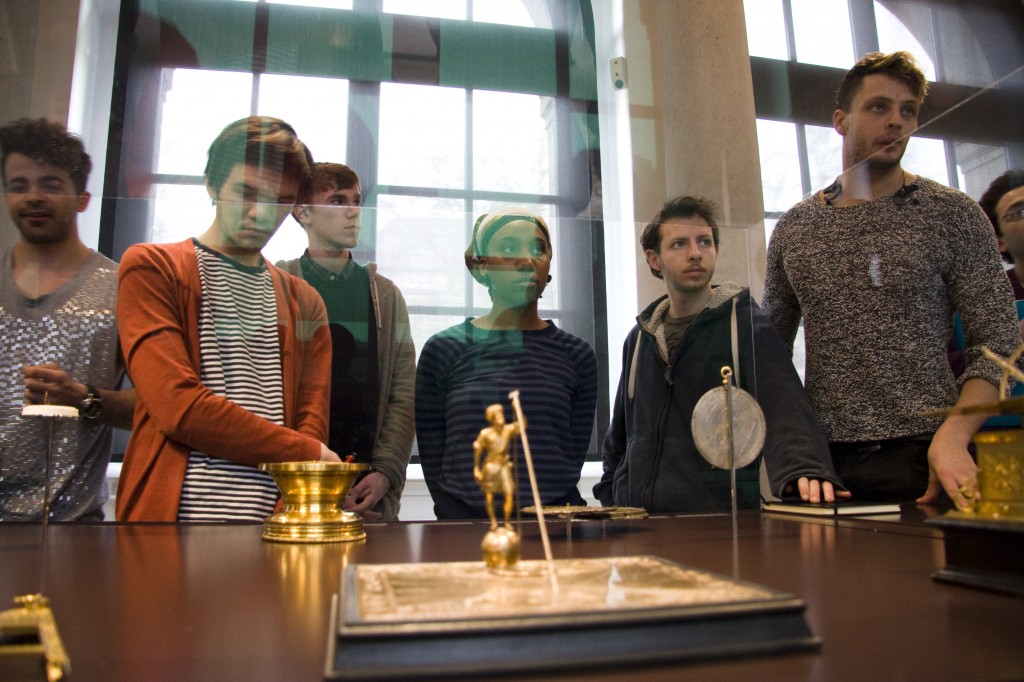
The BA2 students of Bard College Berlin ventured on quite the field trip for their core class History and Philosophy of Science: Early Modern Science on March 8. Led by Professor Michael Weinman, we visited the Mathematisch-Physikalischer Salon in Dresden – home of some of Europe’s first scientific and astronomical instruments.
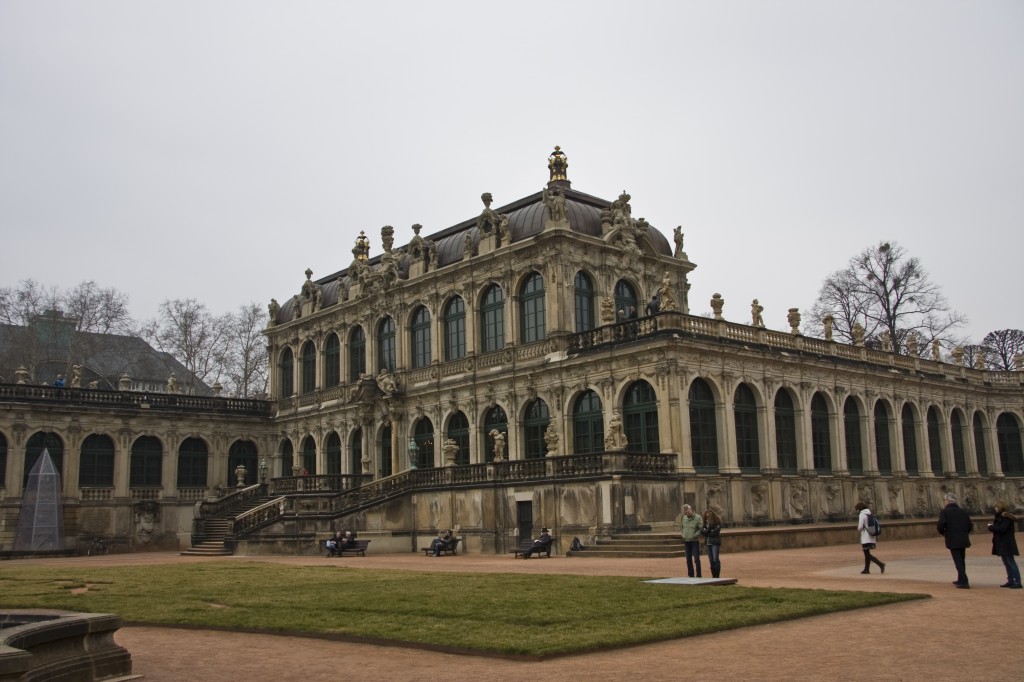
The Mathematisch-Physikalischer Salon (Royal Cabinet of Mathematical and Physical Instruments) in Dresden is a museum whose collections include a variety of historical clocks, scientific instruments for terrestrial and celestial measurements, as well as devices for calculating temperature, air pressure and mass. All of these instruments – in addition to their scientific value – are moreover considered to be veritable works of art. It is therefore not surprising that the Salon is a part of the larger “Staatliche Kunstsammlungen Dresden” (“State Art Collections”) located in the Zwinger – a beautiful palace built in Rococo style that served as an exhibition gallery, festival arena and orangery for the Dresden Court.
The museum reopened on April 14, 2013 – after a thorough reconstruction of the Zwinger – with a new exhibition that presents around 500 scientific instruments from the period of early modern science. The museum’s exhibits are presented in four themed chapters:
The Cosmos of the Prince explores the engagement with questions related to astronomy, measurement and elaborate mechanical devices from around 1600.
A Universe of Globes, situated in the newly constructed space, harbors an array of terrestrial and celestial globes. One of the exhibition’s highlights is its oldest item, an Islamic celestial globe dating back to the 13th century.
Instruments of the Enlightenment, dedicated to the history of the Salon since mid-18th century, displays a collection of large telescoped and burning mirrors. This is the place where for 150 years the official local time of Dresden was determined.
The Course of Time is an exhibition about the history of clocks, watches and automata since the Renaissance period. The highlight of this exhibition is the focus on the beginnings of precision watch-making in Glashütte (Saxony), where the famous Ferdinand Adolf Lange started his watch-making profession.
The history of the Mathematisch-Physikalischer Salon dates back to the 15th century, making the museum one of the oldest scientific collections in the world. Elector August of Saxony was the first person to start collecting objects of art in the munitions and armor chamber of the building. It was already in the 16th century that the collection reached a significantly large scope of objects, many of which that can still be found there today.
The mathematical and physical instruments were taken from the armory in 1724, when these and other collections of the elector were placed in the new “Königliches Cabinet der mathematischen und physikalischen Instrumente” (“Royal Cabinet of Mathematical and Physical Instruments”). This was the official name of the collection until 1746, after which it was moved to the so-called “Pavilion F,” part of the building in the Dresden Zwinger, where it is still situated today – under the same name for 268 years now, as the Mathematisch-Physikalischer Salon. The museum established an observatory in 1784 too, which administered the official time of Saxony for the next 150 years. The task of the museum today is to preserve these beautiful and technically complex instruments and present them to the public as a testimony of Europe’s early modern science.
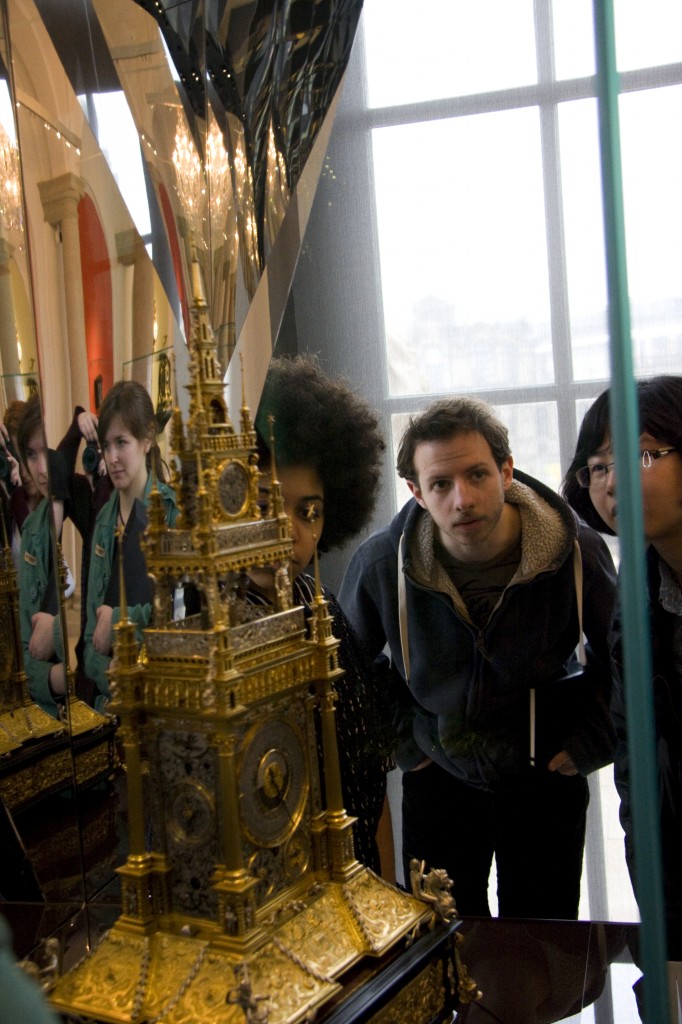
There is something rather magical and ethereal about visiting history museums, whose allurement sometimes reminds me of a spatially isolated time machine. Looking at exhibits that tell tales of our human past allows us to visually glimpse into these foregone epochs, triggering our imagination that consequentially carries us to the world’s crucial developmental stages in our minds. Such an experience becomes even more magnified in a museum like the Mathematisch-Physikalischer Salon.
All that mesmerized glancing at scientific instruments from the 16th century and on, with their refined mechanisms and flawless aesthetics, makes one wonder: what happened to the appreciation of beautiful things? Most of the instruments we saw, from astronomical clocks to world globes, were not only practical scientific objects, but also carefully handcrafted items that were often shown in courts and legal institutions (not only as functional items, but also as a works of art). The Astronomical Clock by Eberhard Baldewein, for instance, decorated the Dresden court in the 16th century.
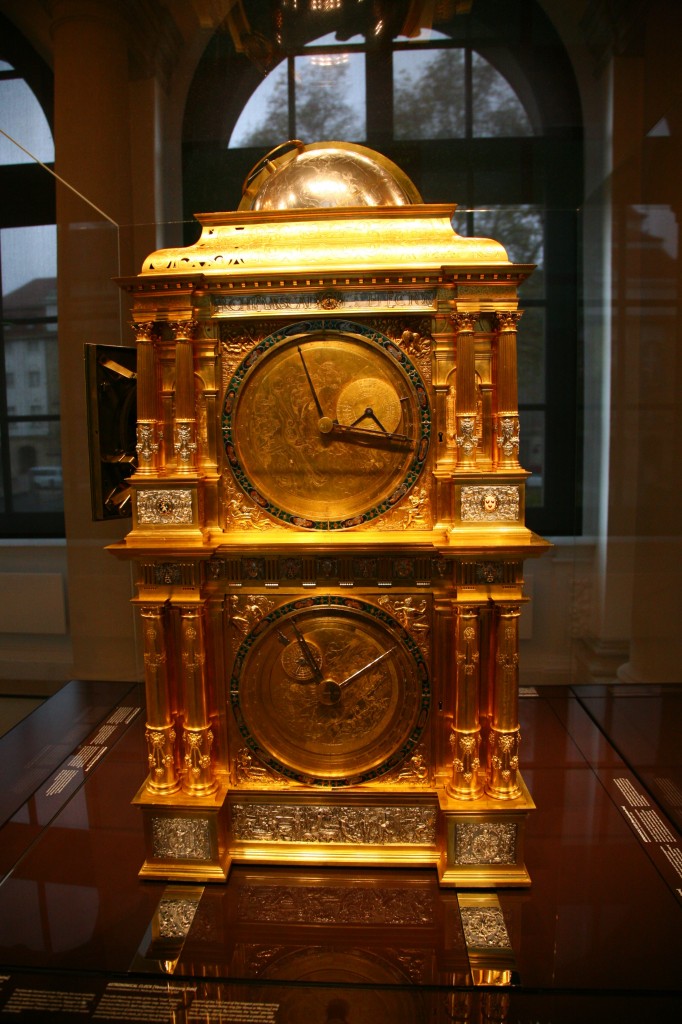
The objects we have seen, from enormous burning mirrors to tiny measuring instruments, equally fascinated us with their precise structures and functionality, as well as their intricate designs and “old” flare of something one could easily call “pre-vintage rarities”. We might have significantly advanced in science since the 16th century, but somehow our modern scientific objects do not evoke, at least for me, a sense of admiration and intrigue as these old exhibits of the Mathematisch-Physikalischer Salon do. They are the standing witnesses of the roots of scientific research, the stubbornly indestructible visual representatives of the first scientific developments.
Our tour guide told us an interesting story of why many of the objects managed to be preserved even during the World Wars – when the Allies entered Germany, they confiscated many art works from the Dresden Zwinger; however, most of the scientific instruments were too heavy to be carried away, which is why they left them where they had stood for hundreds of years. Chance or destined luck? We cannot know with certainty, but we should surely be grateful to have these exhibits defying the course of time thanks to their massive weight that would for most objects today be considered largely impractical for their purposes.
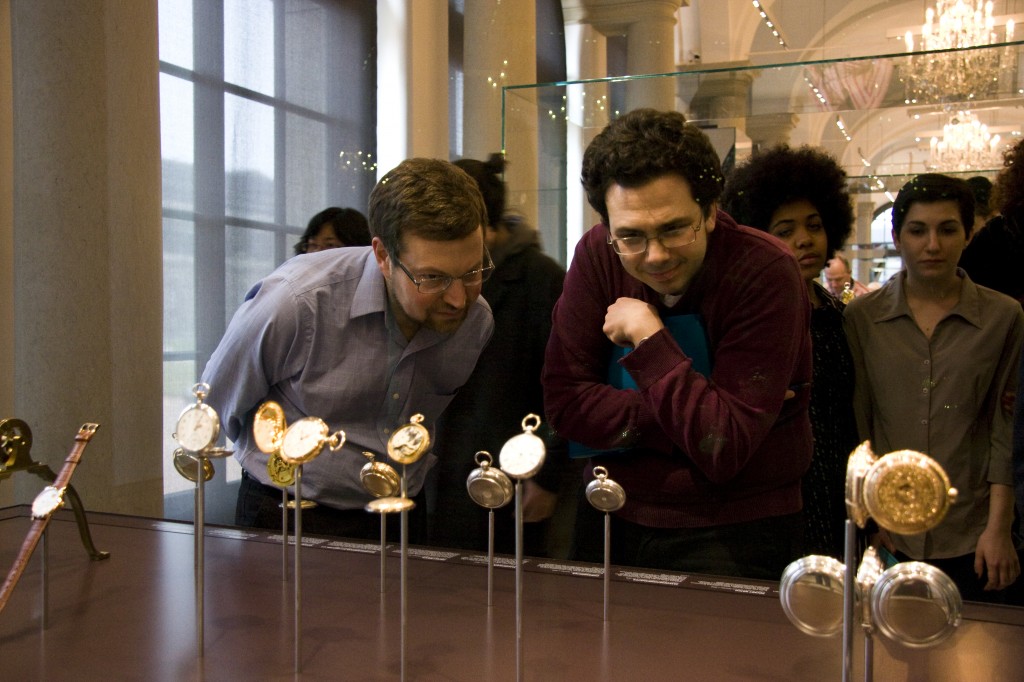
At the end of the day, we collectively concluded that Professor Michael Weinman was not exaggerating in his enthusiasm about this trip – even the 4-hour-long train journey to and from Dresden seemed a small price for the time we were able to spend in the museum. The Mathematisch-Physikalischer Salon hosts some of Europe’s most famous early scientific instruments, and it is up to this day a place that attracts scientists, tourists and children alike. Regardless of one’s personal interest in scientific matters, one can simply not avoid admiring its intriguingly beautiful and interesting objects, such as the Zodiac Globe, the first World Clock or large telescopes that paved the way to our modern technologies for celestial observation. The unique importance of the Mathematisch-Physikalischer Salon’s collections in the history of early modern European scientific exploration is a reason enough to visit Dresden and venture to the most imaginatively resplendent time travel of a lifetime.
